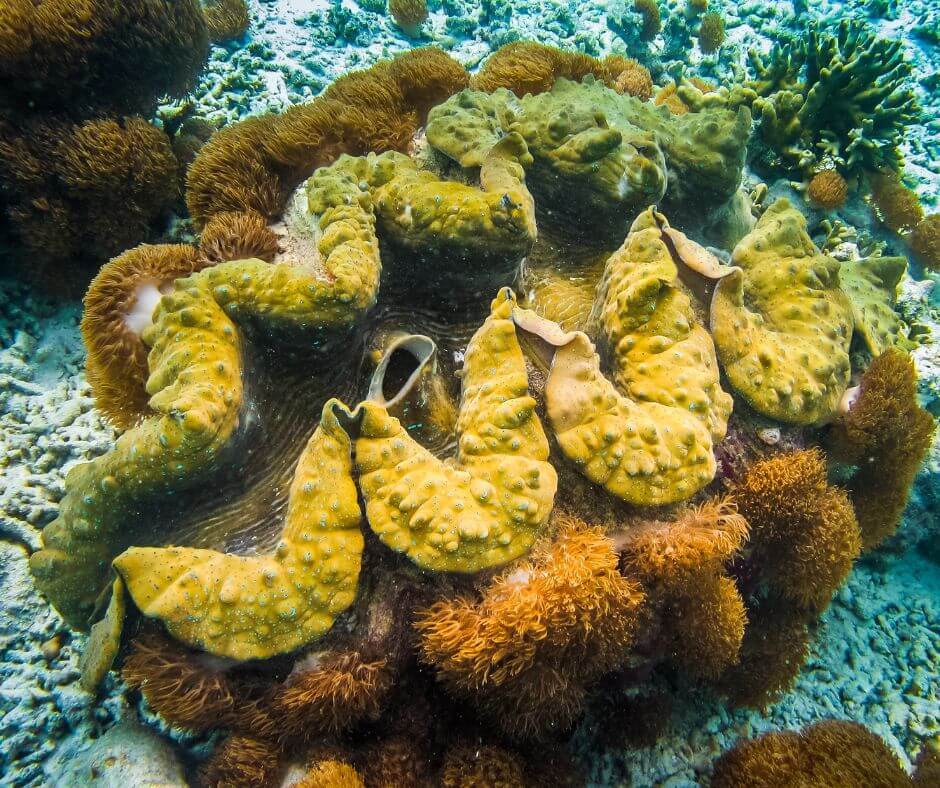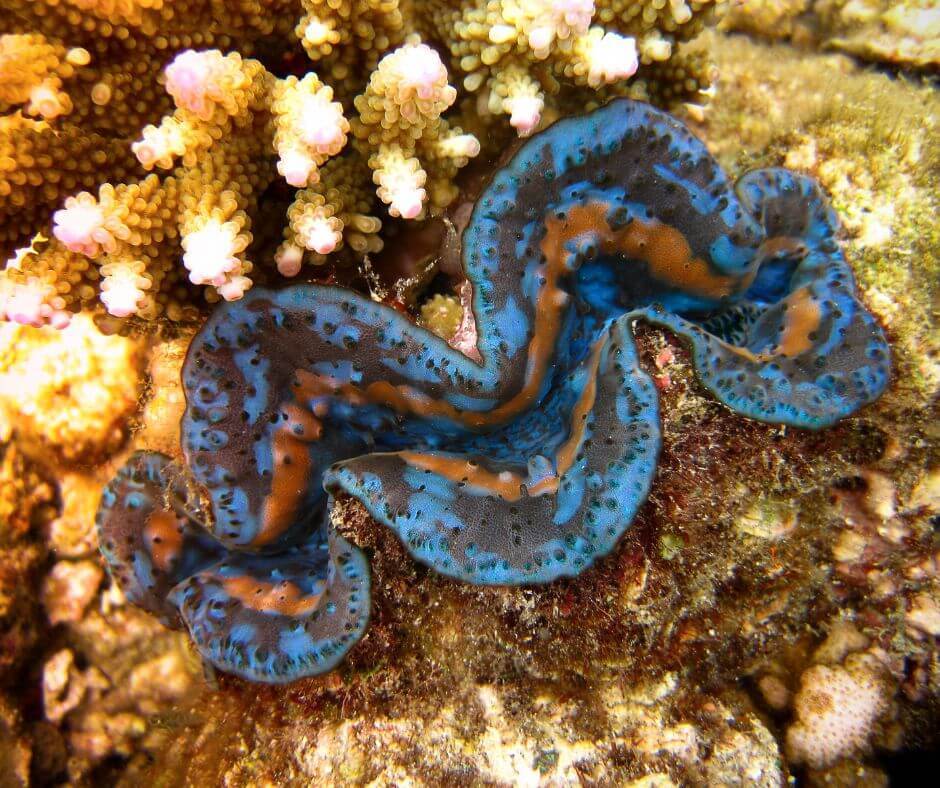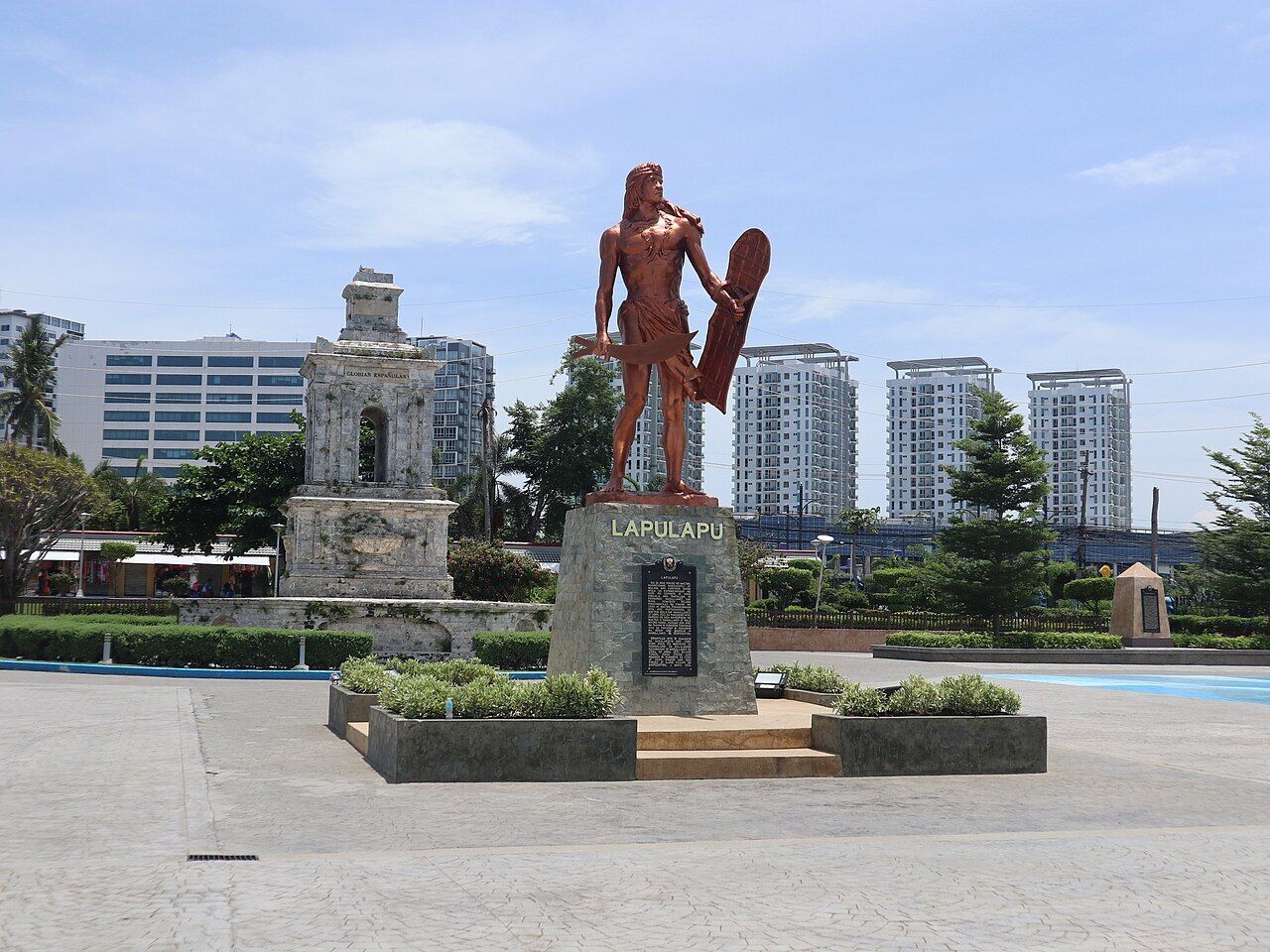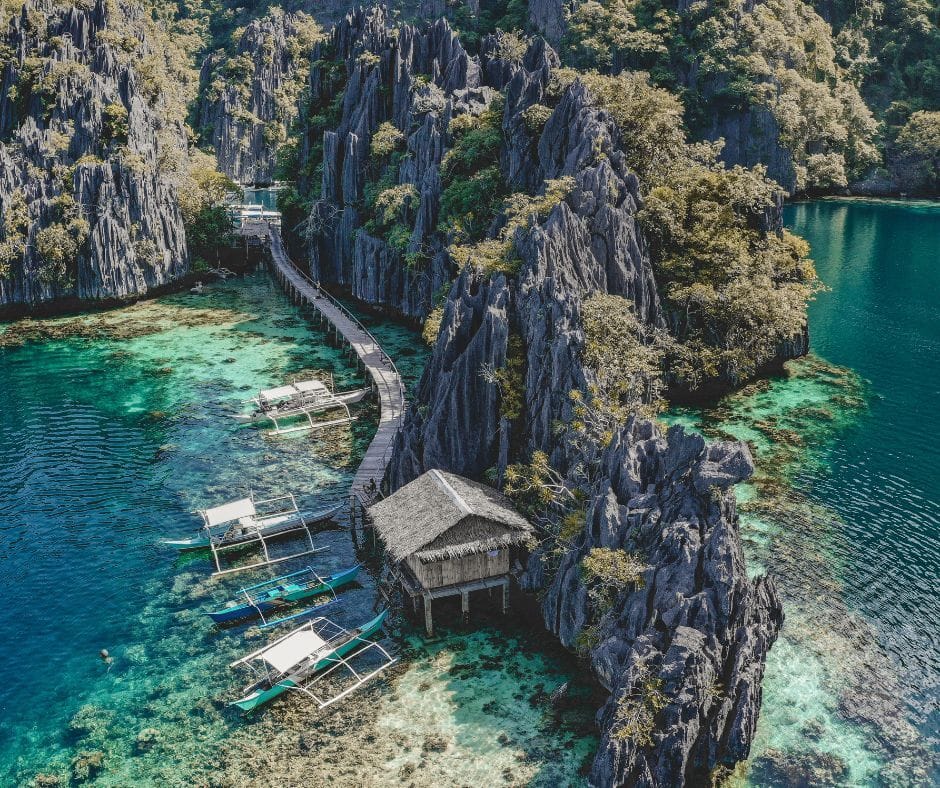- Finding Utopia Newsletter
- Posts
- The Giant Clams of the Philippines – Reef Guardians Under Threat and Revival
The Giant Clams of the Philippines – Reef Guardians Under Threat and Revival
Stories: The Giant Clams of the Philippines - Lapu‐Lapu Shrine - First‐Timer’s Guide to the Philippines 2025 Edition

Hello Everyone,
Welcome to Finding Utopia, your go-to newsletter for discovering how to travel the Philippines and beyond!
Here is what we have for you today.
The Giant Clams of the Philippines – Reef Guardians Under Threat and Revival
Lapu‑Lapu Shrine – Commemorating the Hero Who Stood for Freedom
First‑Timer’s Guide to the Philippines — 2025 Edition
The Giant Clams of the Philippines – Reef Guardians Under Threat and Revival

Beneath the shimmering waves of Philippine coral reefs, one of nature's most majestic creatures quietly thrives—the giant clam (Tridacna spp.). In our latest blog, The Giant Clams of the Philippines, we delve into their biological importance, plight from illegal trade, and inspiring restoration efforts that are turning the tide for this remarkable species.
Giants of the Reef: Ecology & Value
The Philippines is home to seven of the world’s nine giant clam species, including the colossal Tridacna gigas and smooth T. derasa.
These giant clams can exceed 1.5 meters in length, weigh over 250 kg, and live for more than 100 years. Thanks to a symbiotic relationship with algae (zooxanthellae) in their mantles, they derive most of their nutrition from photosynthesis, while also filter feeding—acting as living water purifiers and essential reef custodians.
Threatened but Fighting Back
Giant clams are listed as Vulnerable by the IUCN and protected under CITES Appendix II. Despite this, the Philippines has become a global hotspot for their illegal trade—accounting for over 99% of monitored giant clam shell seizures in Southeast Asia. Authorities in Palawan seized up to 150 tons of giant clam shells, possibly bound for Chinese carving markets, sparking investigations into organized criminal syndicates.
Conservation Efforts & Reclamation
Hope shines brighter beneath the surface. Since the 1980s, the University of the Philippines Marine Science Institute’s giant clam conservation program has successfully restocked nearly 50,000 clams across 70+ reef sites nationwide, including Bolinao’s Silaki Island—known as the country’s “Giant Clam Capital”.
These restocking initiatives have proven effective: clams grown in hatcheries and transplanted into protected marine areas are thriving and even reproducing naturally on the reefs.
Why Giant Clams Matter
These ocean giants are far more than marine curiosities. They:
Improve water clarity by filtering plankton and organic debris.
Provide mini-reef habitats for fish, crustaceans, and corals.
Act as barometers of reef health, their presence signaling ecological integrity.
How You Can Help Protect Them
Support ecotourism & sanctuaries: Fund locally managed marine protected areas with giant clam populations.
Spread awareness: Share stories and conservation updates with others.
Promote policy change: Advocate stronger penalties for illegal harvesting under Philippine law.
Volunteer or donate: Join restoration or monitoring programs like UP-MSI BML.
A Living Legacy for Future Generations
The giant clam is a living emblem of reef biodiversity—and its survival depends on active stewardship. Protecting these clams means preserving entire marine ecosystems—and the livelihoods and traditions that depend on them.
Your support helps sustain a marine legacy that far outlives one life cycle. Dive into the full feature and discover how a resilient species—and a committed nation—are redefining conservation success.
Explore the full story:
Lapu‑Lapu Shrine – Commemorating the Hero Who Stood for Freedom

On the shores of Mactan Island stands a powerful symbol of Filipino resistance and identity—the Lapu‑Lapu Shrine, also known as the Mactan or Liberty Shrine. Our latest blog post, Lapu‑Lapu Shrine, explores its rich significance as a site of history, heritage, and national pride.
A Monument That Speaks of Victory
Dominating the shrine is a 20-meter bronze statue of Datu Lapu‑Lapu, the Visayan chieftain who led native warriors to a decisive victory over Spanish forces led by Ferdinand Magellan at the Battle of Mactan on April 27, 1521. This historic clash is widely regarded as the first organized Filipino resistance against colonial invasion. The monument stands at—or near—the historic battleground, its presence a testament to bravery and early defiance.
Historical Layers: Two Monuments, One Legacy
Adjacent to the Lapu‑Lapu statue is the Magellan Monument, a stone obelisk dating back to 1866, erected during the Spanish colonial period. Together, the monuments encapsulate a powerful duality: the heroism of native leadership and the legacy of European intrusion.
Back in 1969, under Republic Act No. 5695, the site was officially designated a national shrine. In 1981, the bronze statue was inaugurated, reinforcing Lapu‑Lapu’s role as the Philippines’ first national hero in modern historiography.
Today & Tomorrow: Commemorations and Renewal
Recent efforts by the National Historical Commission of the Philippines (NHCP) have led to conservation works on both the Magellan Monument and the Lapu‑Lapu statue. In 2021, the national flag began flying 24/7 at the shrine to mark the quincentennial of the Battle of Mactan.
Plans are underway for a new Lapu‑Lapu Memorial Shrine and Museum, designed to house a larger monument— “The Watch of Mactan”—and serve as an immersive storytelling space by the shoreline. Despite delays, these projects aim to elevate the shrine’s status and educational impact.
Visiting the Site: Reflection & Respect
The shrine is accessible via Punta Engaño in Lapu‑Lapu City, just outside Cebu. Visitors can view the imposing statue framed by tropical gardens and the historic obelisk behind. Interpretive plaques detail the events of April 1521, inviting reflection on early resistance and nationhood.
Visiting Tips Details
Best Time to Visit: Early mornings or late afternoons for cooler temperatures and softer light
Entrance Orientation: No admission fee—but entry is best via guided tours of Mactan history or Cebu city excursions
Nearby Sites: Visit Magellan's Marker, Lapu-Lapu’s city port area, and local artisans selling indigenous crafts
Why Lapu‑Lapu Still Matters
Lapu‑Lapu is celebrated as the first Filipino hero—not just for defeating Magellan, but for resisting subjugation and asserting local sovereignty. His legacy is embedded in city names, currency, folklore, and national identity.
The Lapu‑Lapu Shrine is more than a memorial—it’s a gathering point for learning, commemoration, and inspiration. Annual Kadaugan sa Mactan reenactments on April 27 bring history to life in ceremony and community.
Visiting the Lapu‑Lapu Shrine connects you to the roots of Filipino resistance and identity. It's a remarkable place where heroism in copper and stone offers perspective—and invites us to remember where our shared history began.
Discover the full blog post and plan your meaningful visit:
First‑Timer’s Guide to the Philippines — 2025 Edition

Are you planning your first visit to the Philippines? Our newly published First-Timer’s Guide to Travel the Philippines (2025 Edition) is your essential roadmap to navigating the archipelago with confidence, ease, and cultural insight.
Travel Basics You Should Know
Visa Requirements: Citizens of over 150 countries—including the U.S., U.K., Canada, Australia, and EU nations—can enter visa-free for up to 30 days. Make sure your passport is valid for at least six months beyond your stay, and be ready to show proof of onward travel. Short-term extensions are available locally.
Money & Currency: The official currency is the Philippine Peso (₱). While cards are accepted in major cities, expect many local shops and island destinations to operate on cash only. Keep ₱5,000–₱10,000 (~US $90–$180) in small denominations for flexibility.
Language: English is one of the Philippines’ official languages and is widely spoken in cities, resorts, and airports—making communication easy. Filipino (based on Tagalog) is the national language, while regional dialects like Cebuano and Ilocano are also common.
When to Visit & Where to Go First
Visit during the dry season (December to May) for the best weather—especially ideal for beach days, hikes, and festivals. But don’t forget: popular holidays like Christmas or Semana Santa fill up early—book ahead.
Here are top picks for first-time visitors:
Manila: Explore the historic walled city of Intramuros, Rizal Park, bustling markets, and modern malls.
Palawan: Dive into dramatic landscapes at El Nido and Coron, or unwind in tranquil spots like Port Barton and San Vicente.
Siargao: Famous for Cloud 9 surfing, island lagoons, and a laid-back, seaside vibe that’s perfect for digital nomads and adventurers.
Cordillera Highlands: Discover cool air, serene terraces of Banaue, and unique cave culture in Sagada.
Getting Around the Islands
With thousands of islands to visit, inter-island travel calls for a mix of transport:
Domestic Flights: Carriers like Philippine Airlines, Cebu Pacific, and AirAsia connect Manila, Cebu, Bohol, Palawan, and Siargao efficiently.
Ferries & Fast Crafts: OceanJet, 2GO, and Montenegro Lines link Cebu–Bohol, Manila–Mindoro, and other routes; book ahead during peak season.)
Local Transport: Expect tricycles, jeepneys, Grab, and point-to-point vans—perfect for short distances and regional travel.
Safety & Travel Smarts
The Philippines is generally safe, particularly in tourist zones like Palawan, Bohol, Cebu, and Siargao. Violent incidents are rare—though petty scams like overcharging still occur, especially in Manila. Stay alert, register your trip with your embassy, and have travel insurance as backup.
Other essential tips:
Avoid unofficial tour operators or overly persistent “helpers.”
Keep small cash on-hand and guard your belongings.
Bring mosquito repellent and consider vaccinations, especially if visiting rural or island communities.
Cultural Etiquette & Local Respect
Filipino hospitality runs deep. Respond with kindness to gestures of goodwill—it’s part of local values like “utang na loob” (debt of gratitude). Greet with a smile, learn basic phrases like “Salamat”, and dress modestly at religious or rural sites.
Budgeting & What to Pack
Whether you're a backpacker or luxury seeker, your peso goes far here. Budget wisely for flights, food, and accommodations. Essentials include light clothing, reef-safe sunscreen, water-resistant bags, insect repellent, travel insurance, and camera gear.
Takeaway
Your first journey through the Philippines can be transformational. From urban heritage in Manila, to limestone lagoons, rice terraces, and unwinding shores, the archipelago invites exploration with warmth and wonder.
Approach your trip with flexibility, curiosity, and respect, and the Philippines will reward you with vibrant landscapes, heartfelt connections, and memories that last a lifetime.
Dive into the full guide:




Reply